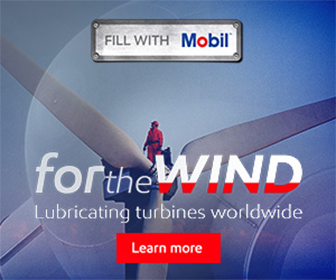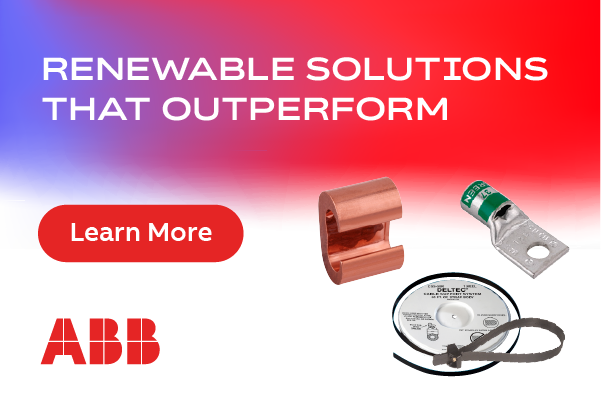New Towers and Hub Heights for North America
 Fluctuating steel prices, falling electricity production costs, and technological leaps are creating big challenges for the U.S. wind power market. New solutions are needed. Maximizing hub heights is the next logical step, especially from a commercial viability perspective - each additional meter increases the annual energy yield of the wind turbine by up to 1 percent. For inland locations with weak wind, the lower wind turbulence and subsequent increase wind yield are factors that favor high hub heights. This is achieved with hybrid towers, which are already known in Europe and Asia for their high hub heights.
Fluctuating steel prices, falling electricity production costs, and technological leaps are creating big challenges for the U.S. wind power market. New solutions are needed. Maximizing hub heights is the next logical step, especially from a commercial viability perspective - each additional meter increases the annual energy yield of the wind turbine by up to 1 percent. For inland locations with weak wind, the lower wind turbulence and subsequent increase wind yield are factors that favor high hub heights. This is achieved with hybrid towers, which are already known in Europe and Asia for their high hub heights.
The U.S. wind power industry has experienced strong growth in recent years, and experts see considerable potential in the future as well. Reasons for this include natural as well as economic conditions, and the energy policy framework. Accordingly, the number of people employed in wind turbine construction, maintenance, and operation reached a new record high of over 100,000 in 2017.
Market research firm Freedonia predicts that wind power generating capacities will grow by more than seven percent annually until 2021, thereby replacing hydroelectric power as the largest renewable energy source in the United States. At the present time, U.S. wind is a lucrative investment because of support programs like the production tax credit (PTC). Analysts expect growth of 10 gigawatts (GW) in wind turbines in 2019, and another 12 GW of new turbine capacity in 2020. Many states offer public subsidies along with depreciation models that are stimulating demand and new wind turbine construction. When the federal tax credit program ends, subsidies in the individual states will play a greater role, from 2020 onward. For U.S. project planners, it is clear that electricity production costs have to come down, and wind turbines have to be more efficient with higher yields. To this end, there is a much greater focus on technical solutions like modern hybrid towers, which promise greater efficiency in the design and construction of wind turbines through higher hub heights.

High hub heights are efficient
Reduced subsidies aren't the only reason the U.S. wind power market is facing major challenges. The cost efficiency of wind turbine towers made from steel in the U.S. is partially dependent on fluctuating steel prices. Moreover, steel towers in 2017 had an average hub height of only 80 meters, and a turbine output of 1.63 megawatts. These comparatively small dimensions place limits on economic viability - limits that can be overcome with hybrid towers and significantly higher hub heights.
The modular tower concept, made up of steel and concrete elements, allows the economically viable implementation of hub heights up to 190 meters. The lower part of the tower is made of concrete elements, and the steel tube upper sections are placed on top. Each additional meter increases the energy yield of the turbine by up to 1 percent. Especially at inland locations, it is often the case that, the taller the wind turbine, the better the wind shear and hence the yield. At a reference site in Iowa, for example, an average additional yield of 0.8 percent per extra meter was achieved when the average hub height was raised from 80 meters to 140 meters.
 The technology in new wind turbines is becoming more powerful, larger, and heavier. Rotor diameters are also growing to generate electricity even more efficiently from the wind, and the forces acting on wind turbine towers are increasing. Hybrid Towers are able to meet these challenges. Using hybrid construction, it becomes possible to find the economic optimum for required tower heights of 130 meters and above. The concrete component is completely maintenance-free and especially durable.
The technology in new wind turbines is becoming more powerful, larger, and heavier. Rotor diameters are also growing to generate electricity even more efficiently from the wind, and the forces acting on wind turbine towers are increasing. Hybrid Towers are able to meet these challenges. Using hybrid construction, it becomes possible to find the economic optimum for required tower heights of 130 meters and above. The concrete component is completely maintenance-free and especially durable.
Production with local labor and raw materials
Another factor that speaks for the innovative tower concept is mobile fabrication. National or regional logistical requirements can be met. Just as importantly - especially in the current market climate - punitive import tariffs avoided. On-site production facilities can use local raw materials and labor, and the concrete elements for the tower can be transported with regular trucks, so there's no need for oversize load transportation over long distances. All of these factors benefit the environment and the bottom line.
Christoph Boschis Head of Distribution at Max Bögl Wind AG, a worldwide company that manufactures hybrid wind turbine towers on site.
Max Bögl | www.mbrenewables.com
Volume: 2019 July/August









